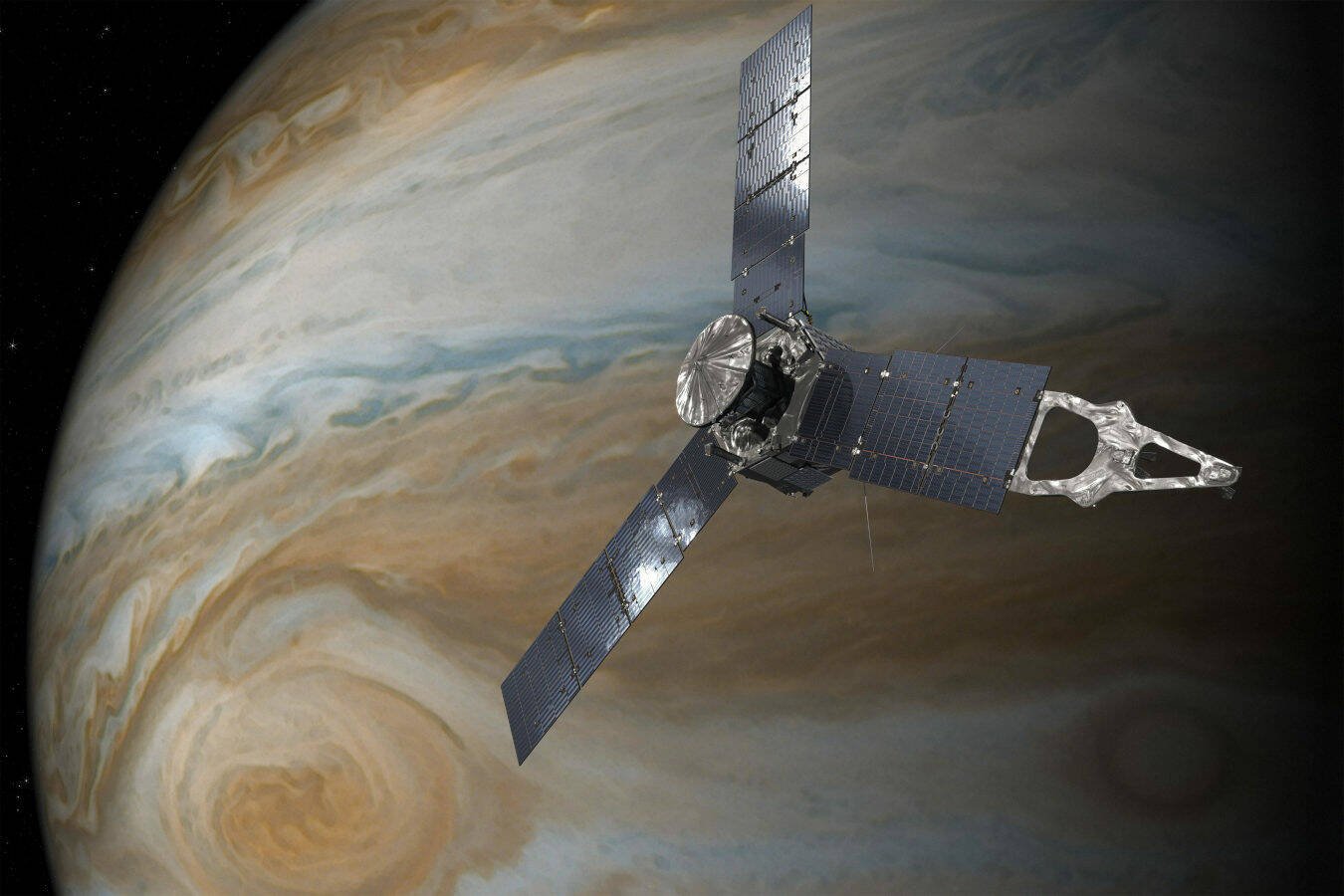
NASA's Juno mission is to close out 2023 with a low pass over Io, one of Jupiter's many moons.
The spacecraft will come within 930 miles (1,500 kilometres) of the surface on December 30. According to NASA this week, "The pass is expected to allow Juno instruments to generate a firehose of data."
We're sure beaming back that sensor data will be a lot of fun. The probe's computer system includes 256 MB of flash memory, 128 MB of DRAM, a radiation-hardened PowerPC processor, and a set of radio communication uplinks and downlinks.
Io is slightly larger than Earth's moon and is said to be the most geologically active object in the Solar System. Its volcanoes produce plumes of sulfur that can reach 300 miles (500 kilometres) above the surface as Jupiter and the other moons of the gas giant pull on Io.
Juno is one of many spacecraft to snap shots of Jupiter and its moons. Pioneer 10 and 11 got there in 1973 and 1974 respectively, followed by the Voyagers, which featured far more advanced imaging systems. The Voyager images provided evidence of plumes emanating from the surface of Io, and the pair were followed by the Galileo probe, which arrived in 1995.
Other craft – Cassini and New Horizons – also made observations as they hurtled toward their ultimate destinations.
Juno is now in the third year of its extended mission to study Jupiter, and a second close flyby – also within approximately 930 miles (1,500 kilometers) is planned for February 3, 2024. Quite a bit closer than the 6,830 miles (11,000 kilometres) to 62,100 miles (100,000 kilometres) from where the spacecraft had been monitoring the moon.
The spacecraft's three cameras will be running during the flyby, and the highest-resolution images to date are expected to be produced by the Stellar Reference Unit. This navigation camera has proven useful for scientific purposes.
However, all is not entirely well with Juno's payload. While the JunoCam – added for public engagement purposes – will be running, this imager is showing signs of deterioration, having passed its expected lifespan. It was, after all, only supposed to operate for up to seven Jupiter orbits. This week's Io pass will be Juno's 57th orbit around Jupiter.
"The cumulative effects of all that radiation has begun to show on JunoCam over the last few orbits," said Ed Hirst, project manager of Juno at NASA's Jet Propulsion Laboratory in Southern California.
"Pictures from the last flyby show a reduction in the imager's dynamic range and the appearance of 'striping' noise."
Engineers are working to alleviate the damage and keep the imager going. The JunoCam kicked off 2023 with some technical issues, including an odd rise in temperature when the device was switched on. It is not, however, considered part of the science instruments, although the images have proven useful to scientists.
The Juno team has slightly tweaked the spacecraft's planned future trajectory to add more Io flybys after February 3. However, these will get progressively more distant, with the last being about 71,450 miles (115,000 kilometres) from the moon.
But all good things must come to an end. The mission is scheduled to run through September 2025 unless something breaks sooner. The data collected has and will prove invaluable for the upcoming Europa Clipper mission and the European Space Agency's Jupiter Icy Moons Explorer – JUICE – which is due to arrive at Jupiter in 2031 following its launch on April 14, 2023. ®
Science - Latest - Google News
December 29, 2023 at 03:04AM
https://ift.tt/7JriVRg
NASA Juno probe to produce 'firehose of data' during close flyby of Jupiter moon - The Register
Science - Latest - Google News
https://ift.tt/JVS1vrX
https://ift.tt/PUyAKWd
Bagikan Berita Ini

















0 Response to "NASA Juno probe to produce 'firehose of data' during close flyby of Jupiter moon - The Register"
Post a Comment